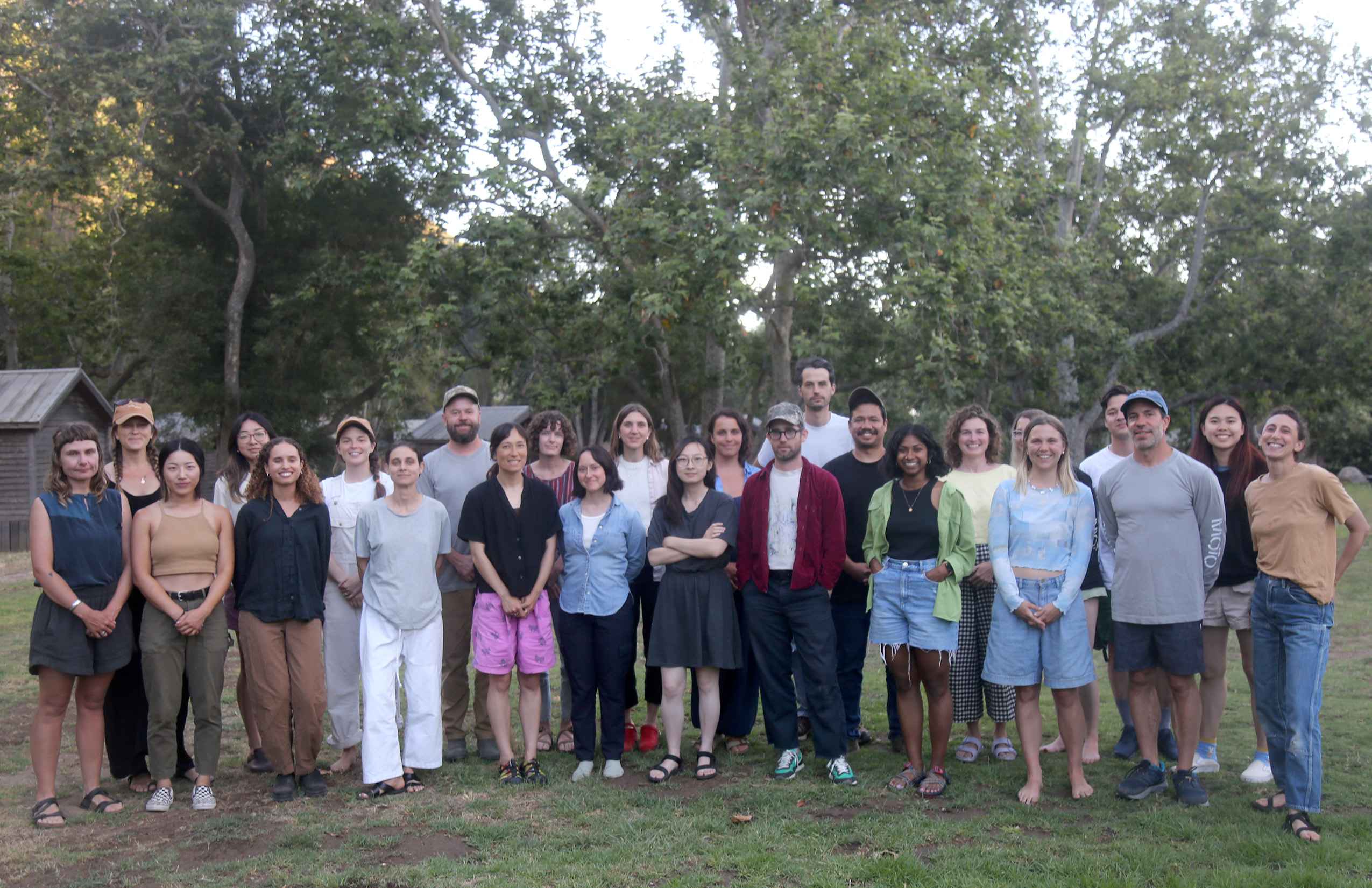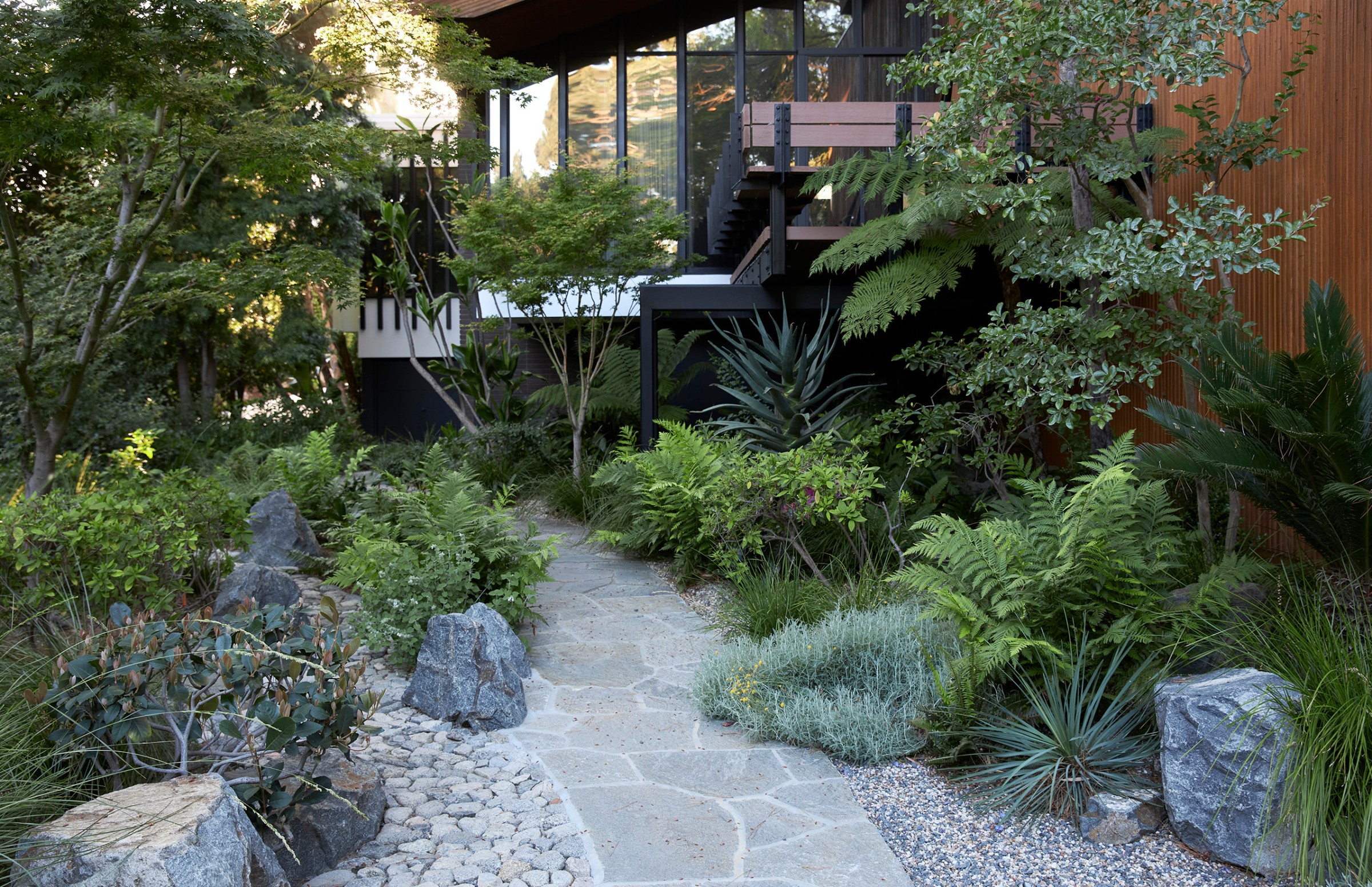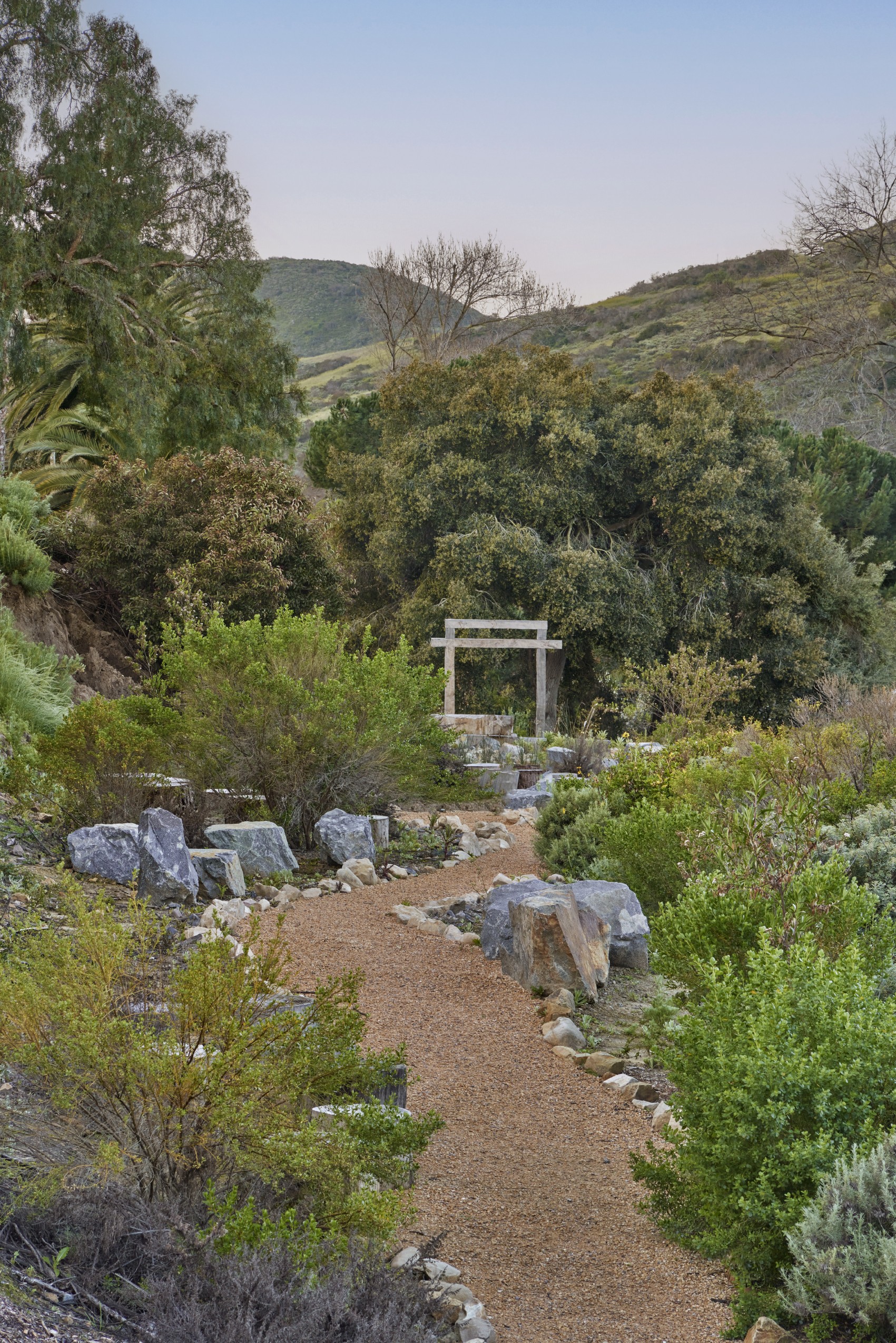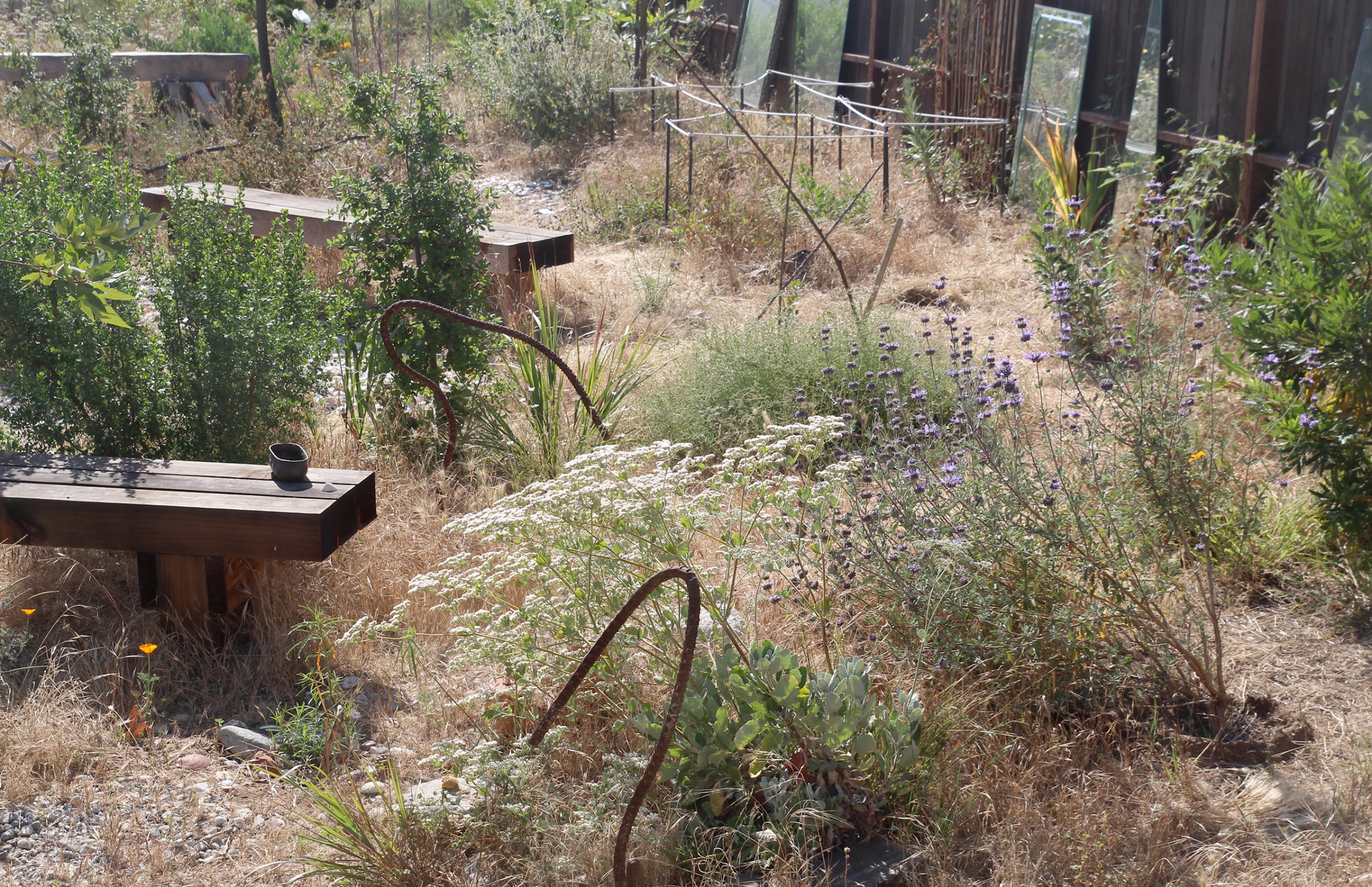Terremoto and its 'unapologetically ecologically focused landscapes' in California
Terremoto, the dynamic and gentle landscape architecture firm, is part of our series of emerging studios that spearhead change in California

Terremoto is the kind of firm that enthusiastically describes its approach to a recent project as ‘hippie-dippy gooey goodness.’ The landscape architecture design studio with offices in Los Angeles and San Francisco digs a countercultural vibe. After all, they did restore and enhance the landscape of the Sea Ranch Lodge, the historic (and famously hippie modernist) outpost on the Northern California coast master planned by landscape architect Lawrence Halprin.

Terremoto: a landscape approach to 'mini habitats'
Their gardens and landscapes are mini habitats—places where people, pollinators (birds and bees), native plants, and even art share the love. In the 7th Avenue Garden, designed in collaboration with artist David Horvitz, a weedy, vacant lot was transformed into a small park made up of a jumble of milkweed, plumeria, and wildflowers. Terremoto added a few chunky wood benches and a deck, and rubble and rebar from the demolished LACMA buildings were shaped into found-object sculptures.

‘It’s our present motivation to build unapologetically ecologically focused landscapes that define a new radical aesthetic; we’re looking for new beauty,’ says David Godshall, who founded the practice with Alain Peauroi in 2013. Jenny Jones and Story Wiggins came on board as partners three years later. In the decade since, it’s grown almost exponentially over a period that includes reckonings around climate crisis, social justice, and labour equity.
As such, the studio has changed its own business model and labour practices, eschewing hang-ups on titles like owner or founder, and instituting an egalitarian profit sharing model. 40% of all profits are dispersed amongst the 26-person team every quarter. ‘It’s not perfect, but we’re trying new things and testing it out as we go along,’ says Godshall.

Testing and iterating is at the core of Terremoto’s approach. The office started a ‘test plot’ in Los Angeles’ Elysian Park where they could research biodiversity, foster community land stewardship, and model ways of working with state and city agencies. Private gardens, however, are their primary site of experimentation. It’s where they work to undo the 20th century pastoral, suburban ideal—bright green lawns and privacy hedges—that is hard baked in the California imaginary. ‘We can re-wild our cities quickly and effectively through residential work, simply put,’ he notes, adding that environmental changes can be implemented faster in domestic settings because they are less restricted by the policies and bureaucracy of public space.

Which is not to say that private projects are simply freewheeling. Ethics and politics guide every Terremoto design from ground up. ‘We believe that gardens are processes, not products; we believe in using local materials and native plants as a way of creating gardens that are ecologically resilient; and we believe that the role of the landscape labourers needs to be elevated and given the proper respect it deserves.’

Receive our daily digest of inspiration, escapism and design stories from around the world direct to your inbox.
Mimi Zeiger is a Los Angeles-based critic, editor, and curator, holding a Master of Architecture degree from SCI-Arc and a Bachelor of Architecture degree from Cornell University. She was co-curator of the U.S. Pavilion for the 2018 Venice Architecture Biennale, and she has written for the New York Times, the Los Angeles Times, Architectural Review, Metropolis, and Architect. Mimi is the 2015 recipient of the Bradford Williams Medal for excellence in writing about landscape architecture. She has also authored New Museums, Tiny Houses, Micro Green: Tiny Houses in Nature, and Tiny Houses in the City. In 1997, Zeiger founded loud paper, an influential zine and digital publication dedicated to increasing the volume of architectural discourse. She is visiting faculty at the Southern California Institute of Architecture (SCI-Arc) and teaches in the Media Design Practices MFA program at Art Center College of Design. She was co-president of the Los Angeles Forum for Architecture and Urban Design and taught at the School of Visual Art, Art Center, Parsons New School of Design, and the California College of the Arts (CCA).
-
 Everything to look forward to in fashion in 2026, from (even more) debuts to the biggest-ever Met Gala
Everything to look forward to in fashion in 2026, from (even more) debuts to the biggest-ever Met GalaWallpaper* looks forward to the next 12 months in fashion, which will see the dust begin to settle after a year of seismic change in 2025
-
 Five watch trends to look out for in 2026
Five watch trends to look out for in 2026From dial art to future-proofed 3D-printing, here are the watch trends we predict will be riding high in 2026
-
 Five travel destinations to have on your radar in 2026
Five travel destinations to have on your radar in 2026The cultural heavyweights worth building an itinerary around as culture and creativity come together in powerful new ways
-
 Rent this dream desert house in Joshua Tree shaped by an LA-based artist and musician
Rent this dream desert house in Joshua Tree shaped by an LA-based artist and musicianCasamia is a modern pavilion on a desert site in California, designed by the motion graphic artist Giancarlo Rondani
-
 Step inside this resilient, river-facing cabin for a life with ‘less stuff’
Step inside this resilient, river-facing cabin for a life with ‘less stuff’A tough little cabin designed by architects Wittman Estes, with a big view of the Pacific Northwest's Wenatchee River, is the perfect cosy retreat
-
 Remembering Robert A.M. Stern, an architect who discovered possibility in the past
Remembering Robert A.M. Stern, an architect who discovered possibility in the pastIt's easy to dismiss the late architect as a traditionalist. But Stern was, in fact, a design rebel whose buildings were as distinctly grand and buttoned-up as his chalk-striped suits
-
 Own an early John Lautner, perched in LA’s Echo Park hills
Own an early John Lautner, perched in LA’s Echo Park hillsThe restored and updated Jules Salkin Residence by John Lautner is a unique piece of Californian design heritage, an early private house by the Frank Lloyd Wright acolyte that points to his future iconic status
-
 The Stahl House – an icon of mid-century modernism – is for sale in Los Angeles
The Stahl House – an icon of mid-century modernism – is for sale in Los AngelesAfter 65 years in the hands of the same family, the home, also known as Case Study House #22, has been listed for $25 million
-
 Houston's Ismaili Centre is the most dazzling new building in America. Here's a look inside
Houston's Ismaili Centre is the most dazzling new building in America. Here's a look insideLondon-based architect Farshid Moussavi designed a new building open to all – and in the process, has created a gleaming new monument
-
 Frank Lloyd Wright’s Fountainhead will be opened to the public for the first time
Frank Lloyd Wright’s Fountainhead will be opened to the public for the first timeThe home, a defining example of the architect’s vision for American design, has been acquired by the Mississippi Museum of Art, which will open it to the public, giving visitors the chance to experience Frank Lloyd Wright’s genius firsthand
-
 Clad in terracotta, these new Williamsburg homes blend loft living and an organic feel
Clad in terracotta, these new Williamsburg homes blend loft living and an organic feelThe Williamsburg homes inside 103 Grand Street, designed by Brooklyn-based architects Of Possible, bring together elegant interiors and dramatic outdoor space in a slick, stacked volume